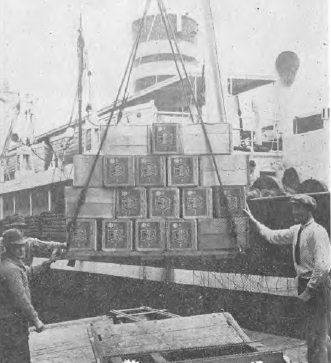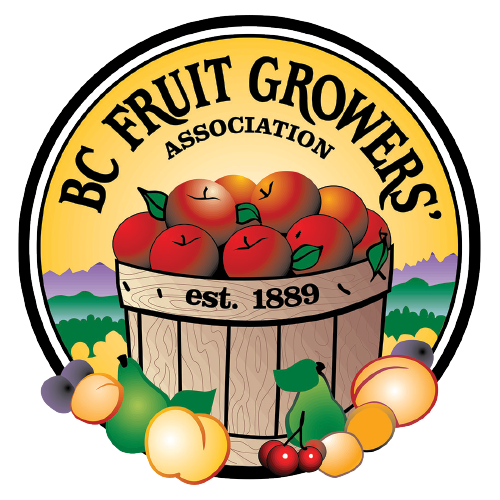Collapse and Renewal
As 1933 began, the British Columbia Fruit Growers’ Association, the only organization which claimed to represent all growers, was in no position to take any action despite the disastrous marketing conditions. The B.C.F.G.A. was using all its efforts simply to stay in existence.

The B.C.F.G.A. had always relied for financing on the annual grant from the provincial government. But now, with the Depression upon it, the government, in its efforts to curtail expenses, had first cut the grant from $4500 to $2500 in 1930, and then suspended it entirely the following year. The Association increased its annual membership fee from one dollar to two dollars in response, but revenue was still insufficient “to continue in operation with any degree of success.” Other methods of financing were tried; in 1931 the B.C.F.G.A. purchased Country Life in British Columbia, the long-time official organ of the Association. Hopes were to turn the publication into a money making venture.

Efforts were made to renew the organization and end internal strife. Dennis Godfrey-lsaacs of Oyama put forth a plan late in 1931, which was presented in March, 1932, by a committee consisting of representatives of both cooperators and independents. He called for the radical reorganization of the B.C.F.G.A., which would act under a five-year three-party contract with growers and shippers. The Association would then act as business coordinator and regulating body for the entire B.C. fruit industry.’1 A revised constitution which would allow such developments was approved at an Extraordinary General Meeting of the B.C.F.G.A. on May 18, 1932. But no further progress was made towards revising the marketing system, both because the B.C.F.G.A. was in a very weak condition and because there was no willingness on the part of the shippers to consider such changes.

Early in 1933 the B.C.F.G.A. simply ran out of funds. It was bankrupt. On March 9, it was revealed that the Association owed $1116.80 and had only $74.85 in the bank.”. This came as a great shock to the growers. Even the independents didn’t want the B.C.F.G.A. to die. R.B. Staples, head of Sales Service Limited, the independent shippers’ sales agency, wrote to Godfrey-lsaacs, who was trying to rally the B.C.F.G.A. members to its support, wishing him sucess.
Surely the fruit situation is serious enough that we can all forget the Okanagan interpretation of the words “Cooperative” and “Independent” and unite to put the B.C.F.G.A. in a “stronger than ever” position.
At a special meeting in Kelowna on April 25, the Executive tendered their resignations, but there was a unanimous vote that the B.C.F.G.A. should continue. The spring was spent in reorganizing the Association on a new foundation, under the provisional leadership of Godfrey-lsaacs and W.E. Haskins. Haskins was elected the new president at a meeting in Summerland on July 13. The financial situation, while not rosy, had at least been brought back to solvency, and membership stood at 1623. A new constitution was adopted at a meeting in Kelowna on November 22. The B.C.F.G.A. would be financed by a per box levy as membership fee, and voting at the Convention would be limited to delegates from the locals, so as ensure fair representation.

Vignette: Fruit to the Dustbowl
Despite the difficulties fruit growers faced during the Great Depression, they realized there were other farmers in worse straits than themselves. They sent large quantities of fruit and other produce to the worst-hit areas of the Prairies, Saskatchewan especially. Between September, 1933, and the following January, Okanagan growers donated 44 railcar loads of fruit and vegetables, specifying that they be distributed in those areas where people could no longer afford to buy fruit. Much of the fruit was cull or of the lower grades, but it was gratefully received-some of the recipients had not tasted an apple for two or three years.

Other fruit growing areas made similar gifts; Grand Forks sent a carload of fruit to the drought area of Saskatchewan in 1934, and mixed cars of fruit and vegetables in 1936 and 1937.
In the process of the reorganization, the Coastal members of the B.C.F.G.A., who were mostly berry and vegetable growers and who had, for several years, expressed the feeling that their interests were not properly dealt with in an Association dominated by tree fruit growers, split off and established their own British Columbia Coast Growers’ Association. This Association held it first annual convention at New Westminster on January 12 and 13, 1934. This organization continued in operation at least until 1947.
Although the British Columbia Fruit Growers’ Association was thus continued, it was in no condition to take any action more decisive than calling on the federal government to pass legislation similar to the recent British Agricultural Marketing Act, which provided for government-run marketing boards for all agricultural produce.







